No Green Thumb Needed! How to grow green beans by the basketful
BeansBeans are a great vegetable choice for beginner gardeners. The seeds are easy to plant, and from one bean seed, you’ll have a plant that can produce enough beans for several meals. The return on your investment is incredible. And homegrown beans taste so much better than anything you’ll find at the store.
Beans grow easily in most locations, and our growing guide will get you started. Bush beans, pole, lima, soy, and even cowpeas; it’s time to get growing.

How to Grow Green Beans from Seed
A successful harvest of green beans starts with the right soil. Knowing when and how to plant beans will get you started.
Soil Needs for Beans
Beans need nutrient-rich soil that can hold moisture. Clay or silt loams with lots of compost or well-rotted manure mixed in make good soil for growing beans.
A slightly acidic to neutral soil with a pH of 6.0 to 7 is best.
Beans are nitrogen-fixing plants which means that they can get nitrogen from the air and add it back into the soil. So if you apply fertilizer to your beans, only add nitrogen in the first three weeks after planting. After that, any extra nitrogen will reduce the amount of bean production.
Rotating bean plants with brassicas will help to replenish the soil.
Beans are also an essential part of the Three Sisters planting method.
Tips for fail-proof bean germination
Beans are one of the easiest seeds to germinate. And because of their size, they are easy to space out and put exactly where you want them to grow.
When to plant beans
Beans are not frost tolerant, so wait until the soil has warmed up to at least 65º F before planting.
You can continue to plant beans every 3 weeks for a staggered summer-to-fall harvest.
Beans can be started indoors about 4 weeks before the last frost date. However, they don’t appreciate being transplanted and often suffer from transplant shock.
Beans are quick growing, and even with a few weeks jump on the season, planting directly outdoors will lead to better results.
How to plant beans
Choose a sunny location. Beans can tolerate some shade but prefer full sun.
Plan ahead for supports or trellis. For pole beans that can grow up to 15 feet, you will want supports or a trellis for them to climb up. If you plan ahead and put these in when you plant the seeds, you won’t disturb the plants or roots later.
Sow beans directly outside. 1-2 weeks after the last spring frost, when the soil has warmed to 65° or more.
Space seeds. Give the plants room to grow by spacing the seeds about 3 to 4" apart. Plant each seed 1 inch deep.
Plant in warm soil. The soil needs to be at least 65º F. If the ground is too cold, the bean seeds can rot instead of sprouting.
Beans will germinate and start sprouting in 7 to 12 days.
Bush Beans vs. Pole Beans
Pole beans will grow in vines 6 to 15 feet high and produce flowers and pods all growing season. You can pinch the tops of the plants to stop their top growth. This will help them put more energy into bean production. Picking beans every few days also encourages them to keep producing.
Bush beans grow about 2 feet tall and usually produce all their pods at once. Bush beans are good to grow for harvesting large amounts at one time to can or freeze. But you can also pick as they grow, and they will continue producing.
Heirloom Bush Beans and Pole Beans

Watering beans
Bean plants need 1 inch of water a week. When watering beans, give them a deep soaking for good root growth. Check the soil between watering to ensure that the water gets deep and the ground stays moist.
When watering bean plants, be careful to only water the soil. Wet leaves can lead to the growth of fungus.
Solutions for bean pests and diseases
- Good soil management and watering practices will help to minimize many diseases caused by fungus.
- Avoid working in the beans when the leaves are wet, as it can spread disease.
- You can add more compost during the growing season.
- Keep an eye on your plants and pick off leaves where insects have laid eggs. Also, pick off any bugs or worms that you find.
- Rotate crops.

Harvesting beans
General tips for harvesting beans
Beans are versatile vegetables because you can eat them at all stages. This even includes cowpeas.
You can eat beans when they are young as snap beans. At this early stage, you can’t distinguish individual beans inside the pod, and they “snap” when broken in half.
Later, the beans inside will get bigger, and the pods will be thinner and tough but not completely dry. At this point, you can shell the beans. Discard the shell and eat the beans or cowpeas inside.
The last stage is when the beans are completely developed. At this point, the pods are dry, and the beans rattle inside. These dried beans can be stored for years and are high in fiber and protein. To preserve dry beans, remove them from the pods and store them in a cool, dry location.
In general, picking beans every few days will keep them producing. However, if you want to harvest them for use as dry beans, simply let them grow and dry on the vine.
How to harvest green beans
Pole beans can produce crops over a long period. However, they can go dormant in really hot weather and produce only flowers that fall off. They will start producing beans again when the weather cools off a little.
How to harvest soybeans
Harvesting your own delicious soybeans is easy to do. They are ready to pick when the beans are bulging, and the pods are still green. Cook soybeans in boiling water and then remove them from the shell. Don’t eat raw soybeans.
How to harvest lima beans
Lima beans require a longer growing season than other beans. They need warm soil and warm weather. Lima beans need to be cooked before eating.
How to harvest black-eyed peas and cowpeas
Although the name can be confusing, cowpeas are actually beans. And all the bean planting and growing methods work for black-eyed peas. They can be eaten at all stages as well.
Heirloom Soybeans and Cowpeas
How to grow green beans in containers
All kinds of beans can be grown in containers, but bush beans are more manageable because of their compact plant size.
To grow beans in containers successfully, the containers need to be at least 7” deep for bush varieties and 10” and up for pole beans. They may also need extra applications of fertilizer during the growing season.
Growing your own beans is easy to do in a home garden. And if you’ve never grown your own lima beans or cowpeas, now is a good time to try. You’ll have the flexibility of harvesting them at any stage, which makes beans even easier to grow and enjoy.





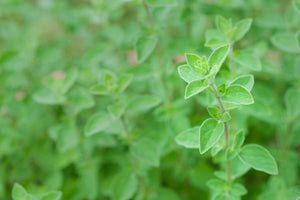
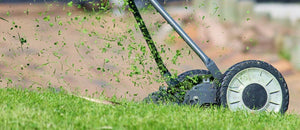
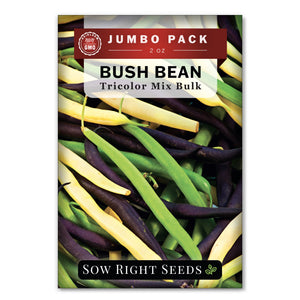
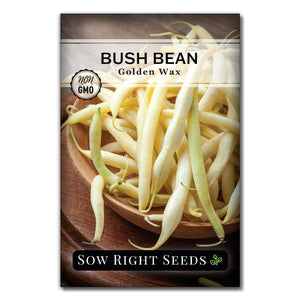
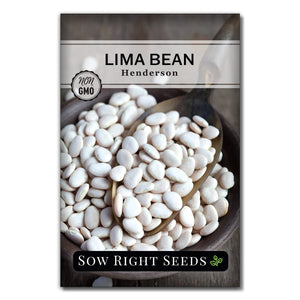
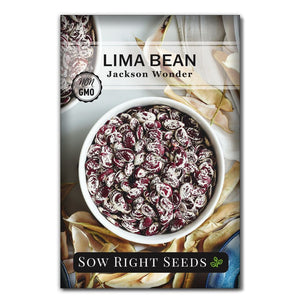
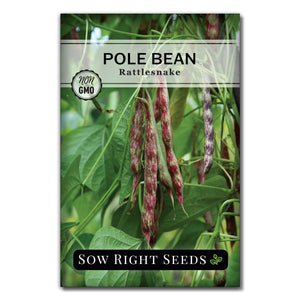
Leave a comment